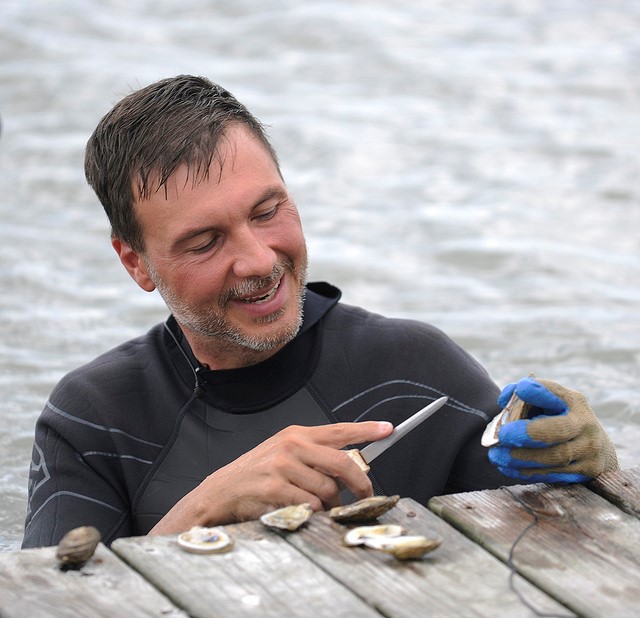Federal grant to help ensure that farmed oysters bound for premium market are as safe as possible for consumption.
August 9, 2018

Auburn University marine scientist Bill Walton, one of the driving forces behind the Gulf Coast’s up-and-coming off-bottom oyster farming industry, has landed a $456,646 federal grant to help ensure that farmed oysters bound for the premium half-shell market are as safe as possible for human consumption.
The grant -- one of 13 competitive food safety awards that U.S. Department of Agriculture’s National Institute for Food & Agriculture has announced as part of its Agriculture & Food Research Initiative, -- will fund a three-year study to determine whether an oyster farm’s geographic location, handling practices and choice of equipment affect vibrio levels in farm-raised oysters, Auburn said.
Vibrio are bacteria that occur naturally in warm ocean waters, such as in the Gulf of Mexico. Certain vibrio species, most notably Vibrio vulnificus, can cause foodborne illnesses in people who eat raw or undercooked shellfish, the university said.
Through his project, Walton should generate valuable data for Gulf Coast oyster farmers, who focus on producing oysters for high-end markets such as upscale restaurants that offer the farmed bivalve mollusks on the half-shell.
“Our findings will help farmers understand and manage their pre-harvest production techniques to minimize the risk of foodborne illness in consumers,” said Walton, associate professor in Auburn’s School of Fisheries, Aquaculture & Aquatic Sciences and marine aquaculture specialist with the Alabama Cooperative Extension System. “These folks absolutely want to provide the safest product they can, so this is critical information for these farmers.”
To achieve the superior product the market demands, farmers grow their oysters in underwater baskets or cages that float above the ocean floor. Once a week, they raise the baskets out of the water and allow the oysters to air dry. That practice prevents barnacles, seaweed and other undesirable organisms from attaching to and marring the oysters, Auburn explained.
Though the air-drying process is crucial to product quality, it is not risk free, said Vicki Pruente, an Auburn doctoral student assisting Walton on the project.
“The frequent handling exposes the oysters to elevated air temperatures and also interrupts filter feeding, and those conditions cause vibrio levels to rise,” Pruente said.
Once the baskets are lowered back into the ocean, vibrio levels gradually subside, but questions remain, Walton said.
“In our trials, we will look at how long after the oysters are re-submerged the vibrio levels return to naturally occurring levels,” he said. “Our results will help farmers as they evaluate their production techniques.”
To establish the impact of geographic location on vibrio levels, Walton and Pruente will conduct the research simultaneously at the Auburn University Shellfish Lab’s oyster research farm in Grand Bay, Ala., and at a farm in Cedar Island, N.C.
You May Also Like

.png?width=300&auto=webp&quality=80&disable=upscale)

